
views
Training Your Bird
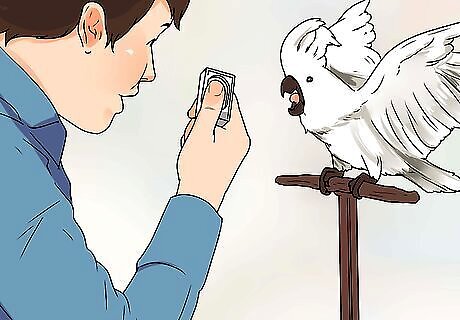
Clicker train your parrot. Parrots are very trainable, respond well to clicker training, and will appreciate the mental stimulus. Mental activity will help decreasing squawking significantly. Clicker training a parrot not to squawk is parallel to clicker training a dog not to bark. Get a clicker and small, ingestible parrot treats. First associate the clicker and treat with one another. In front of your pet, click the clicker and “immediately” give the treat afterwards. Do this until your parrot starts watching expectantly for a treat after the clicker--this is a sign that they have successfully associated the two together. Use the clicker as you would a treat. The clicker replaces the need of providing a treat, which can be expensive over time, messy, and difficult if your bird is a picky eater. Mark each correct behavior with a click. If needed, follow up a click with lots of praise and treats to fortify the “clicker and treat” association.
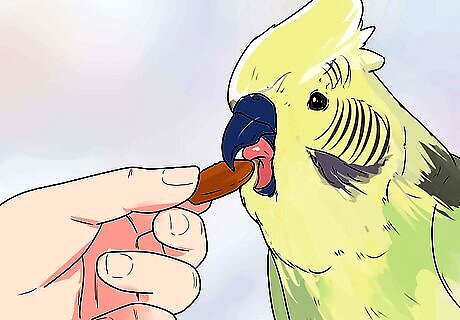
Reward good behavior. Any time your parrot stops screaming when you've left the room, or mimics your soft, muted tones, give your parrot a delicious treat, praise, or click if you are clicker training (keep reading for the last method). Try a variety of treats with your parrot until you learn what it likes. Then use the treats that it responds the best to, but reserve these "special treats" for training purposes. Eventually, your parrot will associate that treat with its good behavior. Birds tend to prefer colorful treats with a lot of flavor. Some bird experts recommend treats like Nutri-Berries or yogurt-covered nugget treats designed for parrots, like Kaytee Yogurt Dips. Break treats into small portions. This allows your parrot to eat quickly and remain focused on the training, without getting too distracted by the reward. Reward your bird immediately after it obeys you. It's important for the reward to be seen by your bird as a quick and immediate response. Otherwise, your parrot may not make that association. Give your parrot verbal praise every time you give it a food reward for its good behavior.
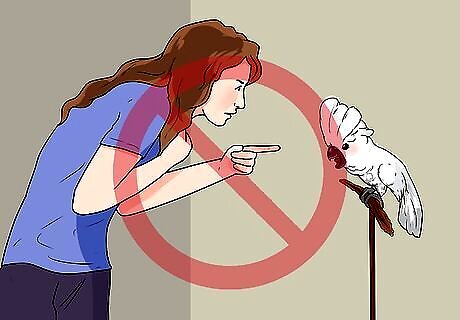
Avoid punishment with yelling or making loud noises. This is what people naturally use when correcting behavior problems in pets, but it sends the message to your parrot that acting out will be rewarded, and it won't help you train your parrot. If you scream at your parrot, it may become frightened and make more noise, or it might believe that you're joining in, something wild flocks naturally do. Ignore your parrot when it screams. It will take some patience, but ignoring attention-seeking behavior is the best way to train your parrot out of its excessive screaming. Even a facial expression can give your parrot the reward it was looking for. It's best to leave the room and completely ignore your parrot when it screams for attention. Be prepared for louder screaming. Just like a toddler throwing a tantrum screams louder when it doesn't receive a reaction, your parrot will scream even louder. But be patient and be consistent, and eventually it will stop. Return to the room once your parrot has been silent for at least 10 seconds. When you return, give your parrot the attention it is craving. Over time this will cement in its mind that desirable behavior is rewarded and undesirable behavior is ignored.
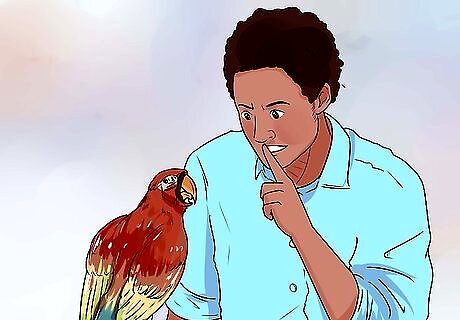
Teach your parrot to speak softly. You won't be able to make your parrot stop talking altogether, but you may be able to train your bird to whisper or speak softly instead of screaming. Practice, patience, and consistency are key when trying to train your bird to stop screaming. Continue to ignore undesirable behavior. Speak softly to your parrot. Use hushed tones, or "communicate" with it through whistles.
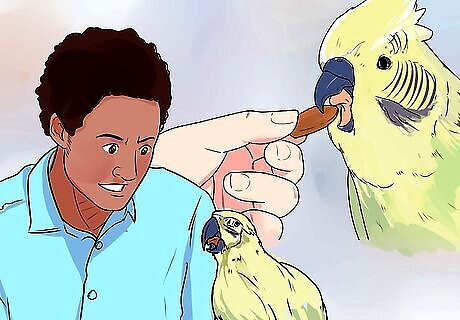
Be consistent. Consistency is the key to any animal behavioral training. Doing things one way some of the time and another way other times will only confuse your parrot. Praise and reward it every time it behaves well, and ignore it every time it acts out.
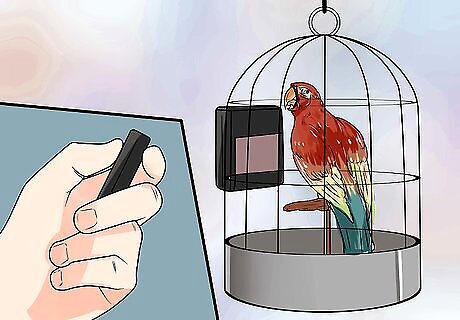
Use strobe light training. Note that strobe lights may be very unpleasant for birds. This should be treated as more of a last resort, rather than as a standard training method. Set up a strobe light near the cage, controlled by a remote control switch. Any time the bird screams, you can trigger the flashing strobe light without being the room (entering the room would be seen as a positive in the bird's eyes). Your parrot will find the strobe light unpleasant, and will quickly learn that acting out results in undesirable flashing lights.
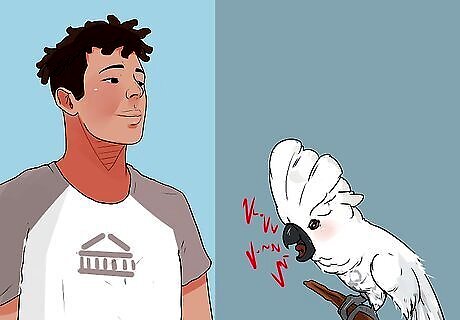
Accept parrot behavior. Screaming is a natural behavior, and you simply can't completely stop it. Parrots are exceptionally vocal, especially during waking hours and before bed. If you cannot handle a loud pet, consider a different home for your parrot. Allowing your parrot to scream during the morning and evening may be helpful in training it not to scream throughout the day. Parrots are also curious and bright creatures. Training your parrot will give it mental stimulus and interesting things to learn. The mental task might decrease squawking on its own.
Changing its Environment

Turn out the lights. Some birds feel over-stimulated when exposed to too much sunlight. Parrots generally need between 10 and 12 hours of sleep each night. Exposure to more than 12 hours of light each day can lead to elevated hormone levels, aggressive behavior, and increased noise output. Close the curtains in the afternoon to limit sunlight exposure, and put a sheet or cover over your bird's cage when you go to bed. Make sure there's enough air flow coming in under the sheet you use. Do not use polyester, as this fabric does not breathe well. For best light blocking, use a black cloth.
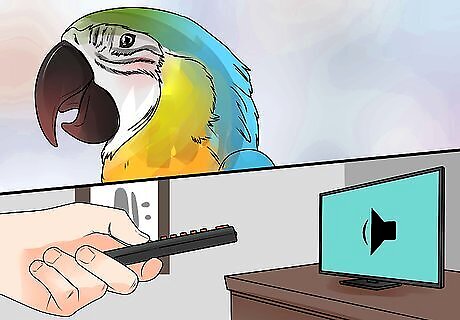
Keep the noise down. Some parrots respond to environmental sound with their own sound. If you're watching television or listening to music at home, keep it at a relatively low volume. Keeping things quiet at home may produce a calmer, quieter bird. Talk quietly. Birds will often quiet down to hear what you are saying. Try providing white noise for your parrot, especially if it screams when you're not home. The television is fine (at a low volume), but be wary of leaving nature shows on, as the sound of birds squawking could provoke more noise from your parrot.
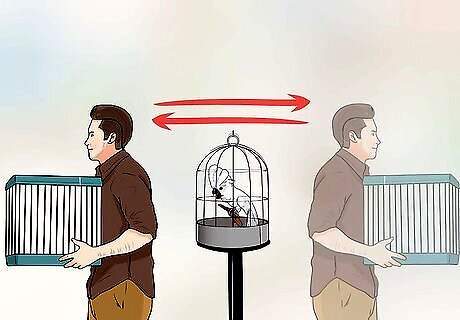
Avoid quick movements. It's possible that you or someone in your household is moving too quickly around your bird, causing it to feel anxious or over-stimulated. Move slowly around your bird, and encourage everyone else in your household to do the same. Always supervise children when they handle or interact with the parrot. Discourage children from running through or around in the room your parrot is in. This may frighten or excite your bird.
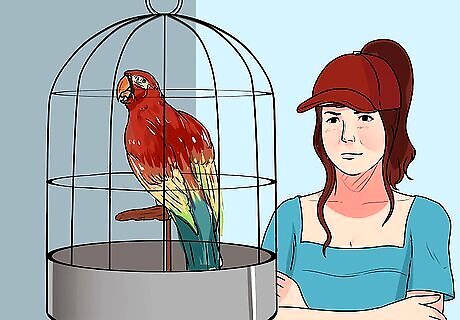
Take note of its reactions. It's possible that your bird is distressed by the sight of certain physical characteristics. Wearing a hat around your bird may cause it to feel uncertain or anxious about who you are. Likewise with certain types of eyewear, and even certain colors in clothing. If your bird is only making excessive noise on certain occasions, it could be in response to something that's different about you or someone in your home. Try to avoid wearing whatever upsets your bird, or expose it to it slowly and gradually so it becomes used to it.
Making Sure Your Bird Is Healthy
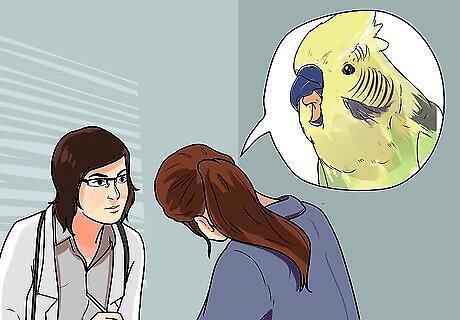
Check for health issues. Sometimes screaming can be caused by pain, and it's worth a trip to an experienced avian veterinarian to check that your parrot doesn't have health issues. Blood feathers (aka pin feathers) may be difficult to diagnose at home. A blood feather is a new, growing feather, which will always have a vein and artery that runs the length of the feather. If irritated or broken off, this feather can cause bleeding. It is not usually life-threatening, but can be painful for your bird. Apply pressure to the site of the bleeding. If it continues to bleed, you may need to take your bird to the vet to have that feather removed. Overgrown toe nails can be painful for parrots, making it difficult to perch properly and posing a risk of getting snagged and broken on fabrics around the house.
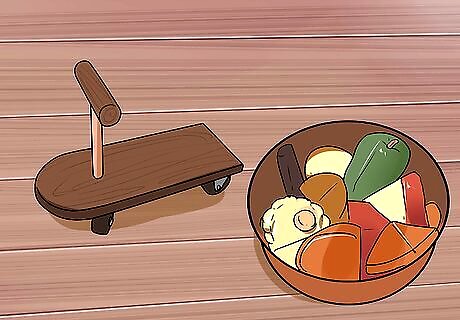
Ensure that your parrot's needs are being met. Check that the cage is not too small, that your parrot has plenty of suitable toys to play with, and that it has enough food and water. Parrots need a diet of around 70% pellets of formulated parrot food, supplemented with plenty of healthy vegetables and the occasional fruit. Parrots require at least an hour of playtime with you. Also expect to provide plenty of interaction throughout the day in addition to at least 1 hour of play. If you're unable to provide this, consider finding another home your parrot. Parrots need ten to twelve hours of sleep every day or they can bite or scream; you can use a bought cage cover or simply a blanket to cover their cage every night to ensure they receive enough sleep.
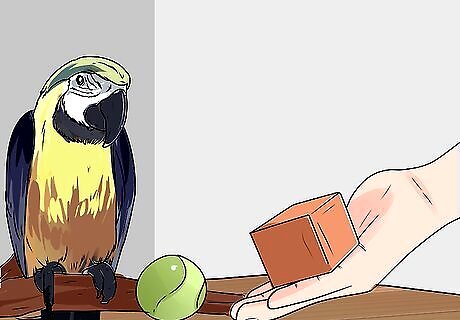
Change up your bird's toys. If your bird is prone to boredom but responds well to toys, it's possible your bird needs new stimuli on a regular basis. Try giving it a new toy every few weeks, and change up what type of toys you give him. Birds like toys with a variety of sizes and stimulating textures that are conducive to chewing or standing on. Toys with sounds can be particularly attractive to parrots. Birds like mirrors. It allows them to look at themselves, and some birds may think they are seeing a different bird. Provide your parrot with interactive toys. Something with a ladder or some type of puzzle component will engage your bird and challenge it intellectually. Make sure the toys you choose are not too big or too small for your bird.
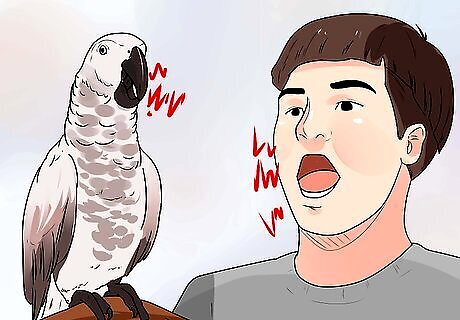
Give your bird reassurance. Birds in the wild participate in "flock calls" as a way of communicating with other birds and ensuring the safety of the flock. If your bird is prone to squawking when you leave the room, it could be its attempt at sending you a flock call. Try squawking back at it from the other room to let it know where you are and reassure it that you're safe.



















Comments
0 comment